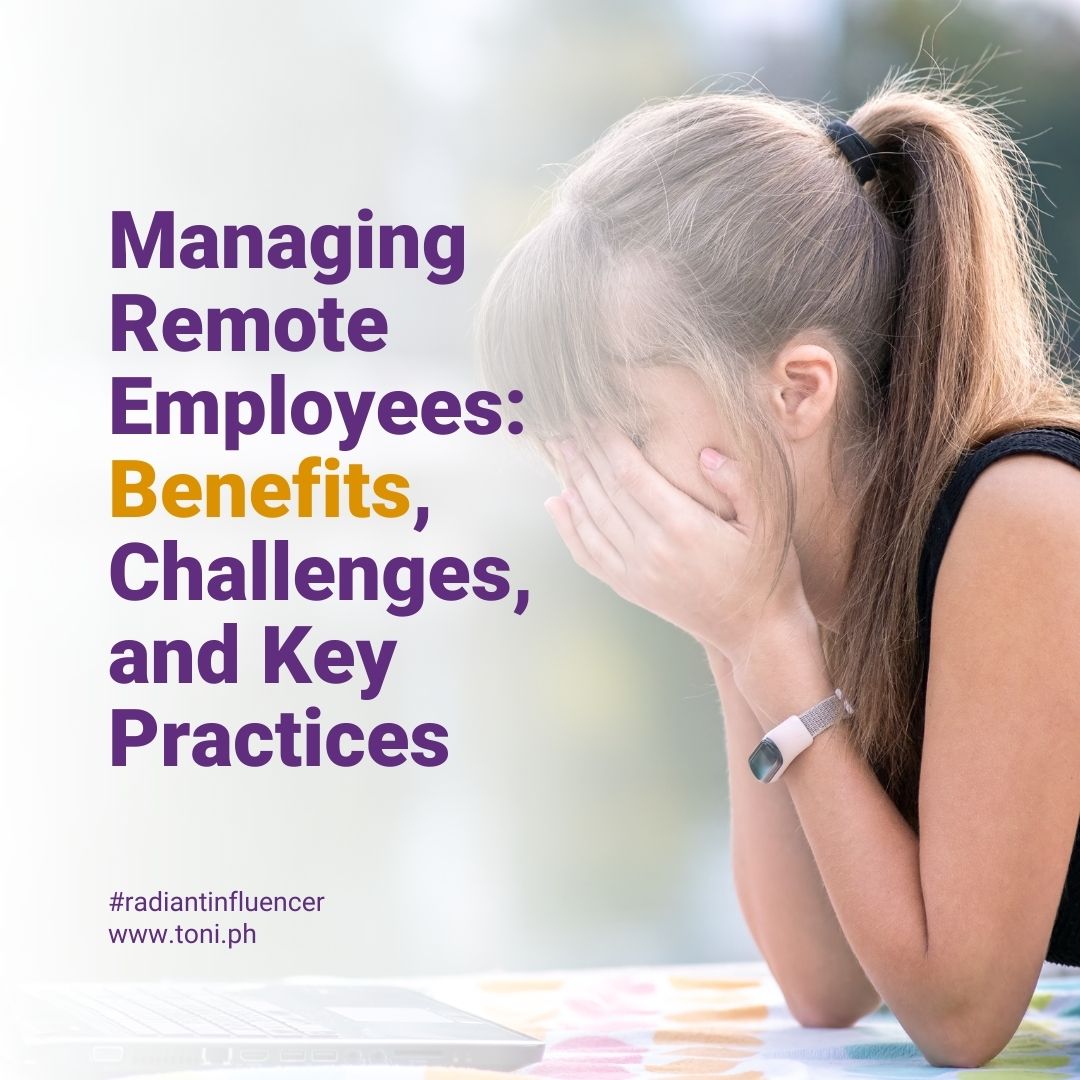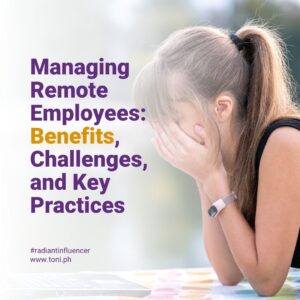The pandemic forced many employees to work remotely. If you work in an office, you might have difficulty adjusting to lead your team. In this article, I’ll be helping you by outlining the key tips for managing remote employees.
As a leader, remote work might sound foreign to you. Yet, you are expected to guide your team into a smooth transition to remote work. But how can you ensure that your team is producing results while also addressing the needs of your employees?
Companies are surprised when they have to implement work-from-home arrangements during the COVID-19 pandemic. Whether your company is looking into remote work as a temporary or permanent solution, know the benefits and challenges in implementing it.
Benefits Of Remote Work
Like it or not, the global pandemic forced most of us to do remote work to keep the operations afloat. It might be difficult, but the benefits can be rewarding.
Reduces Travel Time To Work
Traveling to and from work is one of the most unproductive activities of the day. If you travel for an hour (or more), you know how difficult it is.
There are ways you can make the commute productive, but with remote work, you can oversee your team from your desk at home. It’s a blessing for people who live far away from the office.
All you have to do is to open your laptop or work email to start your work.
With remote work, you don’t have to experience the hassle of commuting or driving, navigating through the traffic. No more waking an extra hour just to get ahead of traffic.
More Time Spent With Family
It is painful to leave your children before going to work. This is especially true for new mothers with infants and growing toddlers. After a day’s work and the struggle from the traffic, working parents often find their children asleep when they arrive home. Your child is growing fast but you are not there to nurture them.
But with remote work, you can now enjoy more quality time with your family. You can spend more time playing with your children and making more memories with them.
With remote work, you can watch over your children while managing your team remotely and your employees can do that same.
Challenges For Remote Employees
The benefits can entice, but there are still challenges that you must address to manage your remote team effectively.
Proper Equipment For Your Employees
There will be expenses along the way to ensure that your team can deliver their outputs. Some employees don’t have the proper equipment to do remote work. They don’t have:
· A reliable internet connection
· A laptop or desktop
Admit it or not, these are essential tools to thrive in the 21st century. Especially now that everything is connected through the internet. These tools are necessities to access basic, yet essential computing programs like Word or Excel, or even e-mail.
Without these, it will be difficult to communicate with your remote employee.
Distractions In Home
As much as you see spending more time with your family a blessing, they can be a source of distraction too. You might have to take care of the children before you can answer that urgent email.
It’s not surprising to see scenes of children popping inside of the room while a guy is reporting.
Being at home, you and your employees have to balance the responsibilities of being a parent (or a son or daughter) while being an employee.
Tips In Managing Remote Employees
The challenges above must be addressed so you can set-up your team for successful remote work. Read more below to know how you can address these challenges in managing remote employees.
Equip Your Team With The Proper Tools
It might not be uncommon to see your employees complaining that they have limited internet access or don’t have a working laptop or desktop.
If they don’t have the proper equipment, consider lending them company property: Laptops or desktop for the time being. Make sure you are accounting for each equipment that will be brought home.
The employee and you as their manager must sign an accountability form. Check with your legal department if this applies. Take note that not all equipment should be brought home.
Focus On Output Instead Of The Process
In the office setting, your team might be used to consulting you for their work. These situations will be reduced in remote work setup. There will be lag time in asking for and getting feedback.
However, effective communication is the key to every situation, in-office, or remote work.
When instructing employees, make sure that the deliverables are clearly defined. So both you and your employees are looking at the same output. They will waste no effort in doing irrelevant work.
Don’t be surprised to receive reports in the middle of the night. Since most employees will work from the comforts of their home, they may incline to work in non-office work hours. Allow remote employees to do their work in their own best work hours.
As long as they deliver the agreed output, and they still meet the deadline, there is no need to micromanage the employee’s process.
Weekly Reports
Designate one day of the week where all team members report their progress in their projects and tasks. This is to check if your employees’ actions align with the desired company outputs.
A simple email thread for each week can do the trick. Team members will report their numbers and their progress.
An alternative is a short Zoom meeting for everyone to report their progress. This can be the equivalent of face-to-face social interaction in the office.
Doing this ensures that your team is meeting their goals. And for your employees to know how their fellow team member is affecting their work. If an employee is falling behind, you can help the employee strategize on how they can reach the goal.
Remote Social Interactions
Communication is not simply done through words. Remote employees miss a lot of social social interactions because everything is done virtually.
Set-up social interaction with your team. One disadvantage of remote work is that employees don’t meet face-to-face. Sure the office drama is not to be missed. But as social beings, we depend on our interactions with other people to build and maintain rapport.
We also depend on the recognition of the work well done. A job well done deserves a pat on the back. But in a remote setup, a simple yet sincere thank you, with an out-of-the-blue emoji can reward the employees.
Provide Emotional Support
A simple personal message to see how your team is doing goes a long way when managing remote employees. Check-in with them to see how well they are doing. If you have their trust and respect, they will confide with you if they are having difficulties in their work.
What you don’t want is to become the manager who does not care for his or her team. If the burden is difficult for your team, they’ll have problems in meeting deliverables.
Conclusion On Managing Remote Employees
Remote work is an unfamiliar concept that quickly became the norm in this pandemic. But whether you are seeing this as a temporary or permanent solution for your team, as a manager, the goal is to create an atmosphere where no team member is left behind.
What about you? What tips can you share on managing remote employees? Share your best practices in the comments below.



